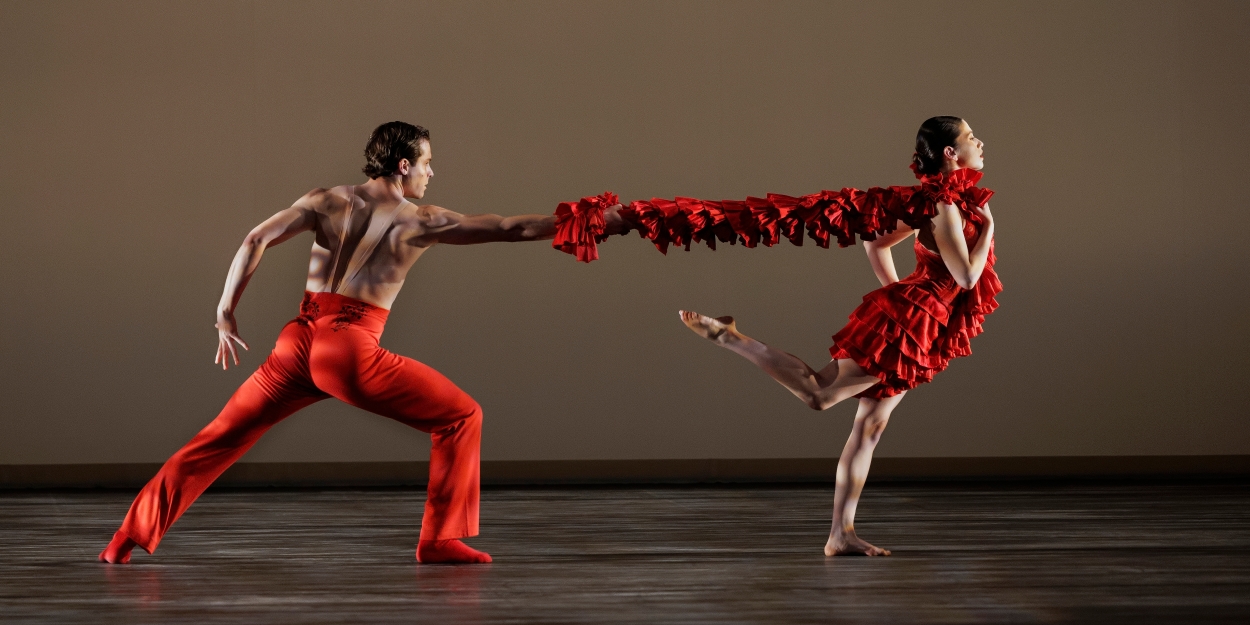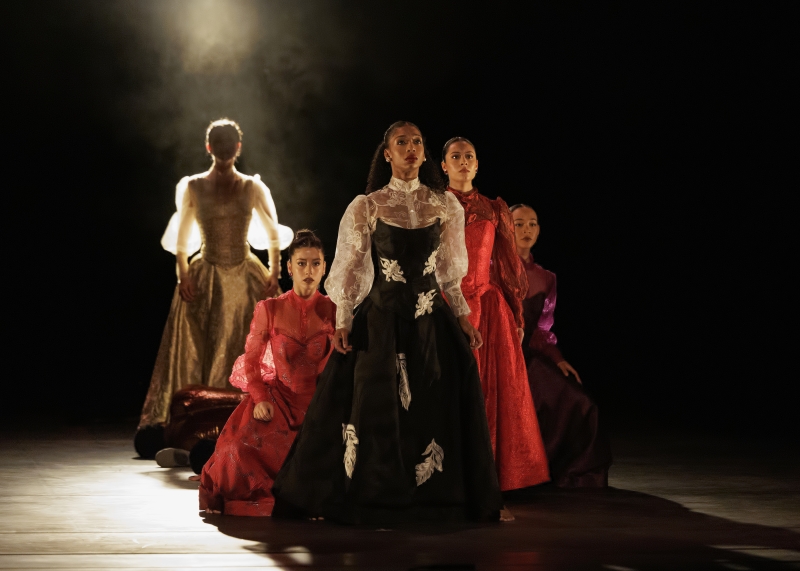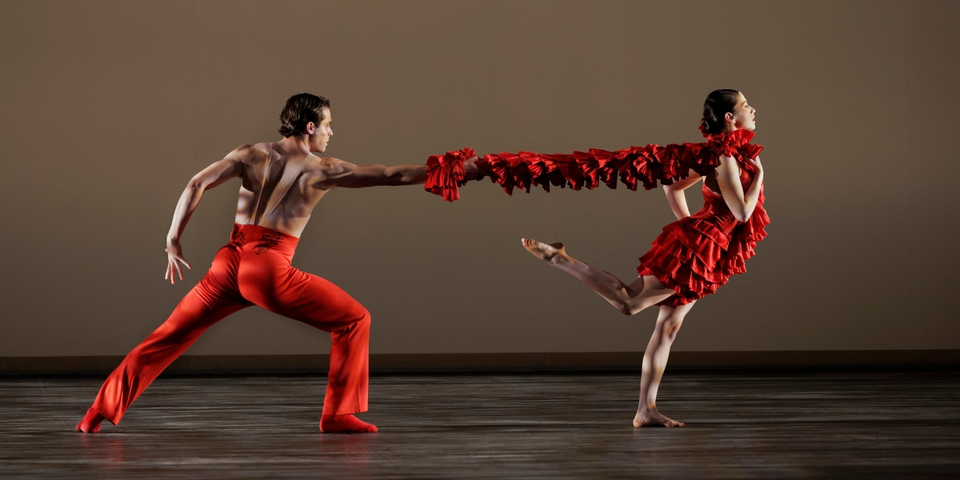Review: For Ballet Hispanico Making Art is About Making Change
The ballet company’s latest installment at the New York City Center focuses on how dance can build community and celebrate the Latinx culture to make a difference.

In his opening remarks at Ballet Hispanico’s June 1st gala performance, Artistic Director Eduardo Vilaro quotes the company’s founder, the late Tina Ramirez, on how dance can make a difference: “This is how we make change, we make art,” Ramirez told Vilaro in the 1980s.
Dance as a changemaker is the connective tissue for the company’s June 1-3 performance series at the New York City Center. The company’s gala performance features works by choreographers William Forsythe, Annabelle Lopez Ochoa, Pedro Ruiz and Michelle Manzanales. Where Forsythe’s New Sleep is bold and explorative; a true homage to Ballet Hispanico’s dedication to breaking down the boundaries between ballet and other art styles, Ochoa’s joyous Linea Recta and Ruiz's Club Havana showcase LatinX culture in bold ways. Manzanales' Sor Juana, the company’s newest work, is where the ability to use art to tell important stories of change is perfected.
Sor Juana is a hauntingly beautiful portrait of the 17th-century Mexican feminist, poet, scholar and nun Sor Juana Ines de la Cruz. It is a work that only Ballet Hispanico, and its emphasis on performing with the entire body and soul, could create. It’s only fitting that Manzanales -- a choreographer to watch -- has a long history with the company, serving as the company’s rehearsal director and artistic associate for seven seasons.
 From the moment Sor Juana begins, in a yellowish haze, audiences are in for an epic journey through de la Cruz’s life. Sam Ratelle’s costuming dedicates itself to transporting audiences to the 1600s, allowing hoop skirts and corsets to expand and contract. The dancers are completely vulnerable -- stripped both literally and figuratively on stage. At times, the work is as frightening as it is majestic. Tall shadows and stuttering breaths and contorted bodies send shivers through the room at the same time it totally entrances. Watching soloist Gabrielle Sprauve transform herself through the life stages of de la Cruz, evokes a certain schadenfreude, if only because it would be impossible to look away.
From the moment Sor Juana begins, in a yellowish haze, audiences are in for an epic journey through de la Cruz’s life. Sam Ratelle’s costuming dedicates itself to transporting audiences to the 1600s, allowing hoop skirts and corsets to expand and contract. The dancers are completely vulnerable -- stripped both literally and figuratively on stage. At times, the work is as frightening as it is majestic. Tall shadows and stuttering breaths and contorted bodies send shivers through the room at the same time it totally entrances. Watching soloist Gabrielle Sprauve transform herself through the life stages of de la Cruz, evokes a certain schadenfreude, if only because it would be impossible to look away.
Ballet Hispanico, at its core, is a masterful storyteller, not only in the dances it creates, but also in the programs it presents. New Sleep is an ambitious start to the program -- and not just because it’s a duet. Without the ability to build energy from an ensemble, Forsythe’s dance instead leans into the sonic experience Thom Williams’ has created. Williams’ score includes bloops and bangs and clanks of several malfunctioning machines set against a driving, percussion beat. The dancers, with an envious and mesmerizing musicality, expertly match each twang or crash with movement so sharp it could draw blood. Fatima Andere and Antonio Cangiano never appear daunted by the precision required to pull off this piece, but rather to genuinely have fun. Set against a starkly bright white stage, with minimal costuming, the entire piece feels as if one has fallen down the rabbit hole and landed inside an overheating harddrive.
Ballet Hispanico’s programs are never complete with works from Ochoa, of its Dona Peron fame. Ochoa is easily one of her generation’s best choreographers and, even if her resume didn’t attest to that very fact, Linea Recta does. The piece bears Ochoa’s trademark sultry elegance. Her male dancers are always masculine, yet sensitive, while her female dancers are playful and powerful. In Linea Recta, Ochoa features a long train on a bright red dress that a soloist, Amanda Del Valle, uses to deftly weave and wrap and tangle the male ensemble. In the hands of a less adept choreographer, it would feel like a gimmick, but Ochoa has made it into a fourth performer, an entity unto itself.

IThe evening closes with an energy, a feeling of fun and abandon, in Pedro Ruiz's Club Havana. Ruiz has a knack for choreographing wrists, fingers, elbows and shoulders in ways that render arms into something pliant and boneless. He puts beauty in flexed feet or jutting heels or bent knees. While audiences may recognize steps and pictures from Latin dance or classical ballet or modern or even hip-hop, the way Ruiz folds it together turns her works into an energy. The series of duets may feel reminiscent of Twyla Tharp's “Nine Sinatra Songs,” in that it is pure joy. It’s a cigar smoked -- literally -- to mark good times spent with good people.
The art Ballet Hispanico creates serves its mission to be a force of change if only because it compels audiences to think differently, to lean into a creativity and a cultural vibrancy unseen in most ballet companies and unimaginable to most people. While audiences may be understandably exhausted from looking for cultural meaning in every piece of art presented during "these unprecedneted times", Ballet Hispanico’s commitment to the artistry -- the choreography, the storytelling, the visual and sonic experiences -- gives it the space to prove Ramirez was right: Art is the change.
The program runs approximately 90 minutes with one 15-minute intermission. Tickets start at $45 and are available for purchase online.
Reader Reviews

Videos

